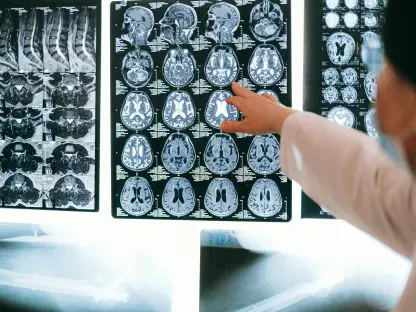Technological progress is swiftly transforming the workplace into a digital-dominated environment, presenting a significant challenge for employees to remain competent. As innovations continue to reshape job requirements, a pronounced skills deficit is emerging. Workers are finding it increasingly crucial to adapt to new tools and processes to stay relevant, as traditional skill sets might no longer suffice. This discrepancy between the capabilities of the workforce and the demands of modern industries is fueling a pressing need for updated training and education programs that can bridge this expanding gap. Employers and educational institutions must collaborate to develop continuous learning pathways that align with the tech evolution. The future of work hinges on the capacity of individuals to evolve alongside technological advancements, requiring a shift in how we approach skill acquisition and professional development. The ability to learn and adapt is becoming just as valuable as technical expertise, underscoring the importance of fostering an agile and learning-oriented job market.
The Urgent Need for Digital Transformation in the Workforce
The Current Digital Skills Gap
Recent studies, like PwC’s Cloud Business Survey, point to a troubling deficit in digital literacy among the UK workforce, with similar trends observed globally. Companies are feeling the strain as 82% of jobs now require some form of digital skills. As per the 2023 Gartner CIO and Technology Executive Agenda, talent shortages are seen by CIOs as a significant barrier to growth. This gap poses a substantial hurdle to both individuals and organizations striving to remain competitive in a digital-first economy.The ramifications of this skills shortage are widespread. Businesses cannot capitalize on technological investments if their employees are not equipped with the necessary knowledge. The UK sees a direct impact on its global economic positioning, prompting calls for strategic initiatives to ensure workforce preparedness. In response, businesses must emphasize talent upskilling as a cornerstone of their growth strategies, negating any potential stagnation that can stem from an underqualified workforce.
The Role of Technology in Modern Business
In an era where technology dominates the landscape of modern business, keeping abreast of the latest advancements is not just advantageous but imperative. Automation, the cloud, and AI are now central to operational strategies, with companies sinking substantial funds into these areas. However, such investments can only offer returns if the workforce harnessing these technologies possesses the requisite skill sets.The speed at which technology evolves is relentless, outpacing the rate at which skills are typically developed. It is up to businesses to ensure that their workforce does not fall behind, which requires a dual strategy of deploying cutting-edge technology and cultivating an environment that supports continuous learning. As technology solves one set of challenges, it frequently introduces new complexities, thereby creating an ongoing need for skills development within the workforce.
The Power and Potential of Cloud Technologies
Defining the Cloud Beyond Data Storage
The cloud transcends its early days of being a mere repository for data. It is now the foundation for innovative tools that include AI and ML, offering businesses pathways to scalability and fresh avenues for innovation. Yet, these technological pathways will lead to dead ends if not traversed by a workforce skilled in these domains.Harnessing the cloud’s capabilities requires a shift in thinking. It’s not just about storing information on a server anymore; it’s about leveraging the cloud as a platform for deploying sophisticated analytics tools, improving customer engagement, and enabling agile business practices. Companies need to recognize the transformative potential of the cloud – but to do so successfully, they must invest in building the necessary proficiencies among their employees.
Upskilling for Cloud Mastery
To dive deep into the benefits the cloud has to offer, businesses must carefully curate an upskilling strategy. With the cloud’s robust capabilities in industries ranging from manufacturing to service sectors, a broad spectrum of skills – from basic digital literacy to advanced technical competencies – are required. By imparting these capabilities, companies position themselves to not only improve their internal operations but to also offer market-leading services.An upskilling initiative should target the diverse proficiencies needed for cloud mastery, which include cloud architecture, security, and data analytics, to name a few. Simply knowing how to use cloud services is insufficient; employees must understand how to innovate within the cloud environment. Therefore, businesses must commit to an ongoing educational process that equips their staff with the ability to unlock the full potential of cloud technologies.
The CIO’s Role in Steering the Digital Ship
Strategic Planning for Digital Transformation
The pivotal role of the Chief Information Officer (CIO) is highlighted in the journey of digital transformation, carefully meshing technical innovations with the company’s goals. Their leadership is essential in developing a digital blueprint that is intricately woven through the company’s strategies and operations.Collaboration with finance and advice from tech experts are key in crafting a tailor-made digital overhaul. This process transcends mere tech adoption, aiming to remodel the corporate culture and guide all stakeholders towards a united digital horizon.In steering this digital course, CIOs must balance forward-thinking tech adoption with practical business acumen. Their vision charts a path not only for technological upgrades but for a transformative cultural and organizational shift that embraces the potential of the digital age.
Pilot Projects for Practical Implementation
Embarking on digital transformation often starts with small-scale pilot projects. These projects serve as a proving ground, allowing an organization to test new technologies on a manageable scale. This approach helps in refining methods, and permits the adjustment of project scopes based on practical experiences.Such pilot initiatives are crucial stepping stones towards larger digital changes. They provide a safe environment for learning and help in cultivating confidence among the workforce about new technological adoptions. By initially focusing on small, specific projects, companies can assimilate crucial insights about the potential of cloud technology and their own capacity for change. These early lessons pave the way for more significant and wider-ranging digital strategies once the organization is ready to expand its technological horizons.
Embedding a Culture of Continuous Learning
Adapting to Transitional Training
The move to a digital-heavy work environment is as much a cultural shift as it is technical. Employees will inevitably need time and support to adapt to new roles that come with the integration of advanced technologies. It is crucial for companies to structure their training programs with a keen understanding of the transitional nature of these changes.An effective training program must provide a roadmap that paints a clear picture of the intermediate steps, as well as the ultimate destination, regarding how roles will evolve. It must instill confidence in employees, assuring them of their place and their ability to grow within the new digital framework. Sensitive and clear communication throughout the transitional phase is key to maintaining worker engagement and smoothing the shift to new working paradigms.
The Creation of a Cloud Center of Excellence
To enrich a culture of continuous learning, establishing a Cloud Center of Excellence (CCoE) is advisable. Such a framework creates a centralized entity within the company that stands as an authority on cloud computing. It fosters an environment where in-house cloud strategy experts can cultivate and share knowledge, guiding the organization through the complexities of the cloud.A CCoE not only ensures a unified approach to the cloud across different departments but also acts as a beacon for best practices and innovation. It empowers a dedicated team to streamline the adoption of cloud technologies and to spearhead the drive towards achieving company-wide cloud competency. This approach can accelerate the development of expertise within the company, serving to both elevate operational performance and bolster strategic capabilities.
Future-proofing Businesses with Advanced Technologies
Investing in Generative AI and Machine Learning
Forward-thinking businesses cannot afford to ignore the potential that advanced technologies like Generative AI and ML hold. Predictions suggest that these tools can amplify tech developers’ productivity by a staggering 25%, offering enterprises an edge in innovation and efficiency. The key to harnessing this potential lies in strategic upskilling efforts.Beyond their immediate impact on productivity, Generative AI and ML are set to revolutionize how businesses approach problem-solving and product development. As such, investment in these technologies goes hand in hand with tailored educational initiatives to ensure employees have the skills required to effectively apply these advancements. This future-focused strategy will empower organizations to stay at the forefront of industry developments.
The Partnership Between HR and Continuous Learning
The strategic partnership between HR and talent development teams is integral to aligning continuous learning with organizational goals. This collaboration is essential in designing learning pathways that cater to the individual roles within a company and the competencies needed to excel in those positions.HR and talent development should consider tapping into resources such as learning platforms and the educational programs offered by cloud service providers. By structuring customized training that dovetails with the company’s strategic direction, organizations can ensure that their workforce remains skilled and capable in a landscape of perpetual technological evolution. This concerted effort will not only bridge the skills gap but also sustain a culture of innovation and progress within the company.By carefully structuring the development and implementation of cloud skills within the workforce, businesses can address the digital skills gap while positioning themselves for continued innovation and growth.









